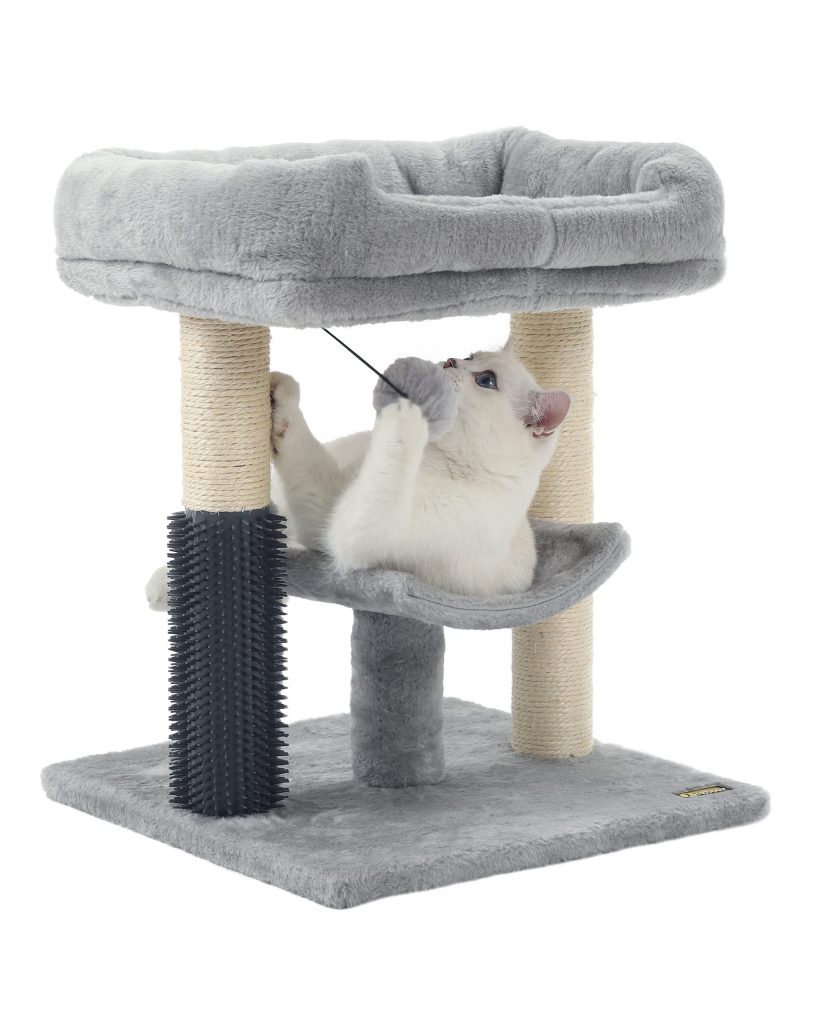Ticks, those minute arachnids that insinuate themselves into the lives of our cherished feline companions, present an insidious threat that belies their diminutive size. These parasites, oftentimes resembling mere specks of dirt upon the luxurious coat of your cat, are in fact harbingers of potentially grave health concerns. As blood-feeding ectoparasites, they are notorious for transmitting a high number of pathogens that could lead to severe illnesses, such as Lyme disease, anaplasmosis, and even babesiosis, among others. The implications of a tick bite can be dire, resulting not merely in localized irritation or discomfort, but progressing, in some instances, to debilitating systemic conditions that can jeopardize your cat’s quality of life.
Perhaps what renders ticks particularly vexatious is their life cycle, which can span from several months to years, allowing them to adapt prolifically to various environments and hosts. The larval and nymphal forms are particularly microscopic, making them difficult to spot, while adult ticks can engorge to a size large enough to be conspicuous. Each stage presents its unique challenges and risks, as these arachnids exhibit a propensity to attach themselves to their unsuspecting hosts during outdoor excursions, particularly in wooded areas, tall grasses, and damp locations.
Moreover, the risk they pose is not confined merely to infection through bites; cats may also suffer from allergic reactions to tick saliva, resulting in conditions such as irritation, inflammation, and more severe dermatological complaints. Such complications underscore the importance of recognizing the signs of tick presence early, which may manifest as excessive grooming, lethargy, or unusual behavior—a subtle indicator that something amiss lurks beneath the surface of your cat’s furry exterior.
Vigilance, therefore, is paramount in this delicate equilibrium between nurture and nature. It bears repetition that the paramount strategy against this multifaceted threat is not solely reactive; it must also encompass proactive measures that safeguard our beloved pets from these creeping, tenacious adversaries. A nuanced understanding of their behavior, habitats, and lifecycle is essential for any conscientious cat owner aiming to provide not just a safe, but thriving, environment for their cherished companion.

Preparing for tick removal
When it comes to the meticulous endeavor of removing a tick from your beloved feline, the preparatory phase is nothing short of vital, as it lays a robust foundation for the ensuing actions. Firstly, ensure the environment is serene and devoid of distractions, for a calm atmosphere will significantly aid both you and your cat during this delicate process. One might liken this to setting the stage for a grand performance—every element must align perfectly to facilitate the anticipated outcome.
Gathering the necessary tools is the next crucial step. A pair of fine-tipped tweezers or a specialized tick removal tool should be at the forefront of your preparations, as they provide the precision needed to eliminate the tick without inadvertently harming the surrounding tissue. Alongside these instruments, a small container to dispose of the tick, antiseptic solution, and a pair of gloves to maintain hygiene should also be readily accessible. This meticulous gathering of supplies not only suggests thoroughness; it implies a level of respect for the proceedings that can alleviate the inherent stress of the task.
Moreover, familiarizing yourself with the various indicators of tick presence on your cat’s body can be helpful. A gentle but thorough examination should take place, particularly targeting areas where ticks are most likely to stealthily attach themselves—such as around the ears, eyelids, between the toes, and along the neck. By visually assessing these regions, you can establish a clear understanding of what you’re about to contend with and prepare yourself mentally for the work at hand.
An integral facet of preparation involves ensuring your cat’s emotional readiness as well. Cats, enigmatic creatures of instinct, may become anxious at the first whiff of unease or the sight of unfamiliar implements, leading to unnecessary distress. Employ techniques of reassurance, such as gentle strokes and soothing words that convey your unwavering presence and support during the procedure. As Henry James so astutely penned, “We work in the dark—we do what we can—we give what we have.” Thus, your emotional investment and circumspect preparation echo the essence of this sentiment, offering your feline the comfort and assurance it craves at that moment.
Lastly, ponder the timing of your efforts. Administering the removal process during a quiet hour when your cat is likely to be more docile increases the probability of a successful and humane extraction. Taking a moment to breathe, center yourself, and reflect on the significance of your actions elevates the process from a mere task to an act of profound care and connection. By investing this preparatory time and thoughtfulness, you are not merely addressing an inconvenience but are, rather, actively participating in your cat’s well-being, affirming the bond that ensnares you both in a tapestry of mutual respect and affection.
Step-by-step removal process
When the moment arrives to engage in the delicate task of tick removal, the application of a systematic approach is essential—much like a carefully choreographed dance, where each movement must be executed with precision and care. Begin by firmly grasping the chosen tool—a pair of fine-tipped tweezers or a specialized tick removal instrument—ensuring your grip is steady yet compassionate, as the aim is to extract the unwelcome intruder while minimizing discomfort to your feline companion.
Position yourself so that you can see the tick clearly, allowing for a strategic approach. The objective is to grasp the tick as close to the skin’s surface as possible; this is akin to drawing a fine line in a composition, adhering closely to the boundaries, ensuring no remnants of the tick’s body remain embedded in your cat’s skin. With your tool in hand, apply a gentle, steady pull upwards. It very important to exercise patience during this phase, as any abrupt movements might cause the mouthparts of the tick to remain lodged in the dermis, potentially leading to irritation or infection.
In this moment, the act of removal transforms into a dialogue—silent yet profound—between guardian and charge. The pull should be steady; avoid twisting or jerking, as such unrefined maneuvers only exacerbate the potential for skin trauma or the unfortunate detachment of the tick’s body while the head remains, like a wayward thought refusing to be dismissed. It bears noting that the tick may exhibit resistance, clinging tenaciously as if loath to relinquish its grip on your pet. Should resistance be encountered, pause momentarily to reaffirm your technique, drawing forth that combination of gentleness and firmness that defines effective extraction.
Once the tick has been successfully liberated from your cat’s coat, it’s prudent to examine the specimen—a macabre souvenir of sorts, yet one that carries vital information. Observe the tick’s body for any signs of engorgement, as a fully nourished parasite can furnish insight into the length of time it may have been affixed to your cat, thus shedding light on potential health risks. Place the tick into the small container identified in your preparatory phase, and securely seal it, for it may serve a purpose beyond mere disposal; should your cat exhibit any signs of illness in the forthcoming days, a veterinary professional may require this specimen for further analysis.
Following this vital removal, it’s paramount to attend to the site of extraction. Employ antiseptic solution to the affected area, thereby eradicating any residual pathogens lingering from the tick’s unwelcome presence. This gentle cleaning serves not merely as a sanitization process, but as a balm of assurance, a soothing gesture to counteract the tension of the removal, akin to cooling the fervor of a tempestuous sea. Observe closely as you apply the antiseptic, for this allows you to inspect the skin for any adverse reactions or lingering remnants of tick material that may require further attention.
It’s important to remain acutely attuned to your cat’s demeanor during and after this encounter. Their reactions provide revelatory insight into their comfort levels and emotional state. Should they exhibit signs of distress or discomfort, certain indicative behaviors such as hiding or excessive grooming may surface, revealing their inner turmoil. In these moments, embrace your role as a reassuring presence—gentle strokes and soft vocalizations can go a long way in facilitating their return to a state of tranquility, a kinesthetic dance of affection that subtly reinforces your bond.
In the aftermath of this delicate procedure, take a moment to breathe, to reflect upon the intimacy of care that has intertwined your fates at that singular instance. As you conclude this immediate effort, engage in thoughtful observation, remaining alert to any changes in your feline’s behavior or health that might arise. The importance of vigilance cannot be overstated, for while ticks may merely be vanquished for a fleeting moment, the repercussions of their presence may linger, necessitating diligent monitoring as a testament to your commitment as a benevolent guardian.

Aftercare for your cat
As you transition into the aftercare phase following the meticulous removal of a tick from your cat’s coat, it becomes essential to foster an atmosphere of comfort, safety, and reassurance for your feline companion. The first step in this essential process is to calmly observe your cat’s reactions post-removal. Their behavior, whether marked by residual anxiety or signs of relief, will guide your subsequent actions and approaches.
By implementing soothing measures, you not only reinforce the trust inherent in your relationship but also facilitate healing. A quiet, cozy corner where your cat feels secure can serve as a sanctuary, shielding them from the hustle and bustle of daily life that could further agitate their senses. You might gently coax them to curl up within this safe haven while quietly attuning yourself to their mood, as your presence can be an anchor of calm amidst their potential tumult.
To further promote a sense of well-being, it’s prudent to engage in gentle grooming of the affected area with soft strokes, using either a cloth or your fingers. This tender touch revisits your cat’s overall comfort level, mitigating any irritation that may have arisen during the tick’s removal. It serves as both a physical and emotional balm, allowing them to reconnect with the pleasurable sensations associated with being cared for, thus outshining the discomfort they may have momentarily experienced.
Moreover, vigilant observation of the bite site is important in these subsequent days. An unblemished area does not always equate to an absence of consequence; thus, you must remain watchful for any signs of abnormality such as excessive swelling, redness, or discharge that might indicate infection. Should complications arise, seeking the counsel of a veterinarian becomes imperative, as they’re the custodians of your cat’s health and well-being.
In tandem with physical observations, your cat’s emotional landscape post-removal warrants your attentive eye. Cats, such enigmatic creatures, often express their discontent through subtle changes in behavior—perhaps a retreat to solitude, decreased appetite, or a noticeable alteration in their playful demeanor. These symptoms may serve as telltale signs of lingering unease or distress, markers that you should heed with a watchful heart. Engage in soft-spoken reassurances, complemented by gentle petting, reiterating your enduring support and love.
It’s also essential to reflect upon the potential psychological impact of this encounter. The act of tick removal, while necessary, can be a startling experience, igniting an instinctive wariness towards future grooming sessions or outdoor excursions. To counteract this, integrating positive reinforcement techniques into your interactions post-removal can yield profound benefits. Treats, coupled with forms of play that cultivate joy and connection, can brilliantly counterbalance any lingering anxiety and instill confidence in your cat’s explorations once again.
In this light, aftercare transcends mere physical attention; it evolves into a holistic nurturing process that prioritizes the emotional equilibrium of your feline friend. You may articulate to your pet, through your tone and gestures, the importance of trusting you as their caretaker, ensuring that the shadows of unease dissipate like mist in the morning sun. Such efforts affirm the bond between you—an intricate weave of loyalty, comfort, and unwavering care that binds you together in a tapestry of companionship.
Ultimately, aftercare is about much more than simple observation; it is a period for restoration—a chance for reflection upon the moments shared amid the upheaval of distress. By integrating gentle vigilance with a heartful approach, you not only facilitate your cat’s recovery but also reinforce the depth of your relationship, an enduring testament to companionship and devotion in the face of life’s unpredictable challenges.
Preventative measures for tick control
In contemplating the multifaceted terrain of tick control, one must heed the wisdom of prevention, for it’s here that the proactive measures undertaken can carve a path toward safeguarding our beloved feline companions from these minuscule marauders. The domestic environment, to which our cats often retreat, must reflect a landscape that is as inhospitable to ticks as possible, thereby depriving these parasites of an inviting habitat. This not only pertains to the immediate physical space of the home but extends to the broader yard and surrounding areas where your cat may frolic.
First and foremost, think meticulously managing your garden and outdoor spaces; this involves the regular mowing of grass, trimming of dense bushes, and the elimination of brush piles or leaf litter, all of which serve as prime breeding grounds for ticks. By maintaining a tidy exterior, one effectively curtails the conducive environment that supports tick populations. Furthermore, the introduction of gravel or wood chips along pathways and in designated cat areas can deter tick migration into spaces where your feline explores. Imagine creating a natural barrier, a thoughtful demarcation that enriches your cat’s experience while at once acting as a sentinel against these unwelcome intruders.
In addition to landscaping, the employment of natural deterrents can augment your defensive strategy. For instance, certain plants, such as lavender and rosemary, possess qualities that repel ticks while exuding delightful fragrances that invigorate the senses. These botanical allies, when planted judiciously around your home and outdoor spaces, weave a fragrant tapestry that actively combats the tick threat. In this way, one not only beautifies their surroundings but fortifies their household against the encroachment of nature’s more nefarious elements.
One must also turn their attention to the cat itself, where diligent grooming emerges as a paramount defensive measure. Establishing a routine grooming schedule serves a dual purpose; while it aligns with the general health and cleanliness of the coat, it also allows for the early detection of ticks before they become embedded or engorged. Ponder this practice not merely a chore but an opportunity for bonding, a time to reinforce the trust and affection that bind you. Quality grooming tools, including fine-toothed combs designed to capture those elusive ticks, become invaluable allies in this endeavor, which will allow you to affirm your role as both caretaker and companion.
To further enhance protection, the judicious implementation of topical treatments and medications, prescribed by your trusted veterinarian, must also be considered. These antitick solutions are designed to create a chemical barrier that repels or kills ticks that may wander onto your dear cat’s coat. It is imperative, however, to adhere strictly to the guidance of veterinary professionals regarding the selection and application of such treatments, as varying breeds and sensitivities may necessitate tailored approaches. As the age-old adage reminds us, “An ounce of prevention is worth a pound of cure”; thus, the prudent choice of preventive medications embodies this time-honored truth.
Finally, engaging in a vigilant lifestyle with respect to your cat’s outdoor excursions can yield significant dividends. Limit outdoor forays predominantly to well-maintained areas devoid of tall grasses and dense foliage, where ticks proliferate in abundance. Keeping your cat on a leash while venturing into nature’s embrace not only ensures their safety but also allows for immediate interventions should a tick presence arise. With each journey into the great outdoors, thereby, one negotiates a balance between exploration and security—a delicate dance that honors your cat’s instincts while safeguarding their health.
All these approaches converge to create a comprehensive strategy for tick control, one this is intricately woven into the fabric of your daily routine. By establishing durable practices that champion both environmental vigilance and personal attention, you embark upon a commitment to your cat’s longevity and happiness. Thus, implementing these preventative measures becomes more than mere preparation; it evolves into a testament to your devotion—a shared journey through life’s wilderness, navigating together with grace amidst the exposures and vulnerabilities that might lie ahead.







